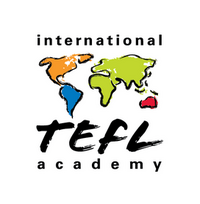

"Differentiated instruction allows all students to access the same classroom curriculum by providing entry points, learning tasks, and outcomes tailored to students’ learning needs."
-DIFFERENTIATED INSTRUCTION: Making Informed Teacher Decisions
What does that mean?
All learners deserve to be given opportunities to receive content in a variety of ways and to prove their competence in the material in a manner that complements their preferred learning styles and Multiple Intelligences. All students should be learning the same content, simply at varying levels of complexity (Darrow). We should deliver our content in a number of ways and be adaptable. An example of this in an ESL/EFL classroom could be students hearing a song using the lesson's targeted grammar and then reading a short paragraph with the grammar being used in a natural context before the teacher explains the concept. This allows students with either Verbal-Linguistic strengths or Rhythmic-Musical intelligences a chance to access the material in a way that is relatable and interesting.
Differentiated instruction favors formative assessment, which means we are constantly assessing our students and making changes as needed in regards to how we are presenting information and allowing our students to practice the concepts. Our content, processes and products in the classroom should be aligned with our curricular goals and objectives but based on the individual student's abilities to comprehend and to prove his or her level of understanding. Not every practice activity should be a simple worksheet; we should also include kinesthetic activities that get our students out of their seats and moving about the room. Nor should every summative assessment be a written test. At different points throughout the course, we should give students the opportunity to choose how they are assessed. Perhaps they can choose between a written essay or an oral presentation; maybe they decide if they want to work on the final project individually or with a partner.
Findings show differentiating instruction based on learning styles is liable to lead to more efficient instruction and improve the academic success of the students and develop positive attitudes towards the activities (Tulbure). This type of instruction places the focus on the student, allows flexibility on the learning tasks and provides chances for students to succeed. Likewise, it highlights needs and preferences and is central to honoring diversity.
As educators, our job is to consider all of the aspects of culture, the classroom environment and students' preferences and differentiate our instruction to meet these unique needs. We need to consider culturally responsive teaching in order to make learning more interesting, relevant and effective for our students. Our students should feel respected and honored in who they are and how they learn regardless of differences.
Differentiated instruction is modifying instruction so all students can be successful by emphasizing students' interest, using the correct starting point and allowing students to work at their own pace (Morgan). By allowing students to work at their own pace on some activities or tasks, the students who are strong and confident in learning English are encouraged to keep pushing forward and to be challenged in a way that they currently may not be. It would also allow the students who need more time to feel at ease and less pressured from the group to keep up when it's beyond their reach.
By including some of these recommendations in our ESL/EFL classrooms, we can better serve our students and assist them in the language-learning process. Want to learn more about meeting your diverse students’ needs? Sign up TODAY for a seat in one of our 4-week TEFL course in Costa RIca!

Darrow. (2015). Differentiated instruction for students with disabilities: Using DI in the music classroom.
Edmentum. (2016). Create Personalized Learning Plans for Every Student: A How-to Guide.
Morgan, H. (2014). Maximizing student success with differentiated learning.
Tulbure, Cristina. (2011). Differentiating Instruction upon Learning Styles in Higher Education: A Controversial Issue.
Watts-Taffe, Laster Broach, Marinak, McDonald Connor, Walker-Dalhouse. DIFFERENTIATED INSTRUCTION: Making Informed Teacher Decisions

